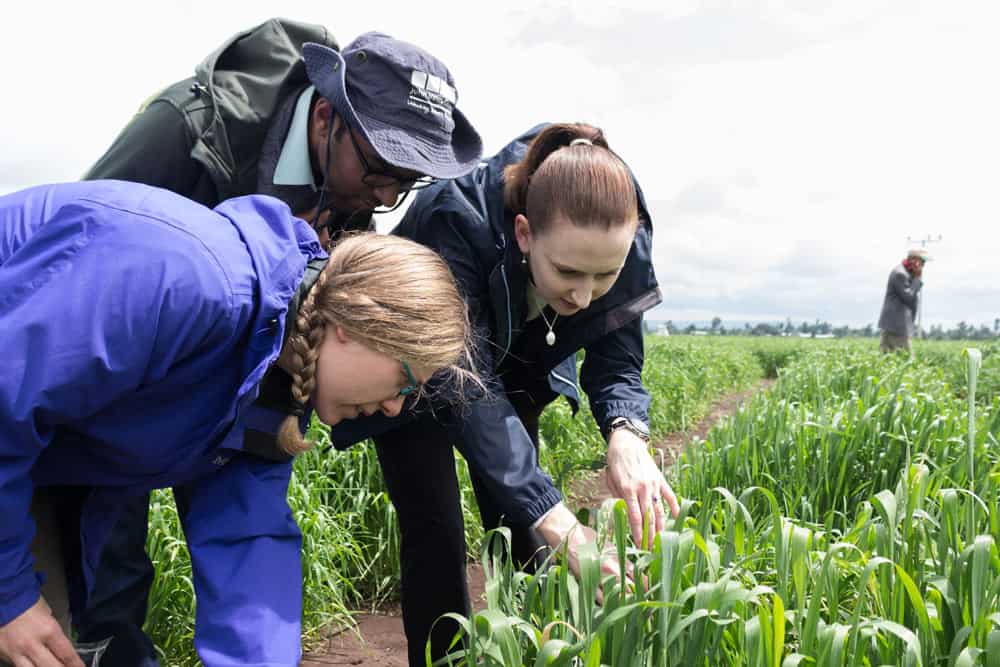Innovative surveillance technique gives vital time needed to track a cereal killer
A new paper published in BMC Biology by the MARPLE diagnostics team, a 2018 Inspire Challenge Scale-up winner, shows how the research partnership reduced the speed of diagnostics from many months in high-end labs, to just two days from the side of an Ethiopian field.
Scientists have created a new mobile surveillance technique to rapidly diagnose one of agriculture’s oldest enemies—wheat rusts.
The hand-held DNA sequencing device is able to identify the precise strain of the wheat rust fungus in a farmer’s field within just 48 hours of collecting samples. This gives researchers worldwide vital time needed to spot and control emerging epidemics.
The wheat rust fungi have threatened wheat production almost since the dawn of agriculture and harvests in all major wheat growing areas worldwide remain under threat. The best defense is to grow wheat varieties resistant to infection, but over time, new strains of rust develop that lead to new epidemics. The best way to stay ahead of the rusts is to quickly identify and track the disease in the field.
The paper; ‘MARPLE, a point-of-care, strain-level disease diagnostics and surveillance tool for complex fungal pathogens‘ in BMC Biology shows how a research partnership reduced the speed of diagnostics from many months in high-end labs, to just two days from the side of an Ethiopian field. “Knowing which strain you have, is critical information that can be incorporated into early warning systems and results in more effective control of disease outbreaks in farmer’s fields,” said Dr. Dave Hodson, a rust pathologist at the International Center for Maize and Wheat Improvement (CIMMYT) in Ethiopia and co-author.
Saving time is not the only benefit; the MARPLE diagnostics method can also be carried out anywhere. Previously, if researchers at field sites wanted to test a suspected infected sample, they would have to ship it to a handful of specialist labs frequently overseas.
The MARPLE diagnostics method was formulated to operate directly in the field. This in itself can be challenging with intermittent electricity, no internet access in remote locations, and a lack of refrigeration for lab reagents. Yet, if the pipeline was to function at these research stations, it needed to work despite these barriers.
This combined speed and self-reliance allows in-country research groups to coordinate more closely with government ministries and national breeding programs which work to protect the local farmers.
The paper published in BMC Biology outlines the steps that were taken to deliver this combined computational and experimental framework. It is hoped that by publishing this process, similar surveillance methods could be developed for other complex fungal pathogens that pose threats to plant, animal, and human health.
The MARPLE diagnostics project is led by CIMMYT, the John Innes Centre, and the Ethiopian Institute of Agricultural Research (EIAR) with funding from the Biotechnology and Biological Sciences Research Council (BBSRC) and CGIAR Platform for Big Data in Agriculture Inspire Challenge.
For more about MARPLE diagnostics, visit the project page.
August 13, 2019
John Innes Centre
Norwich, England
Latest news





